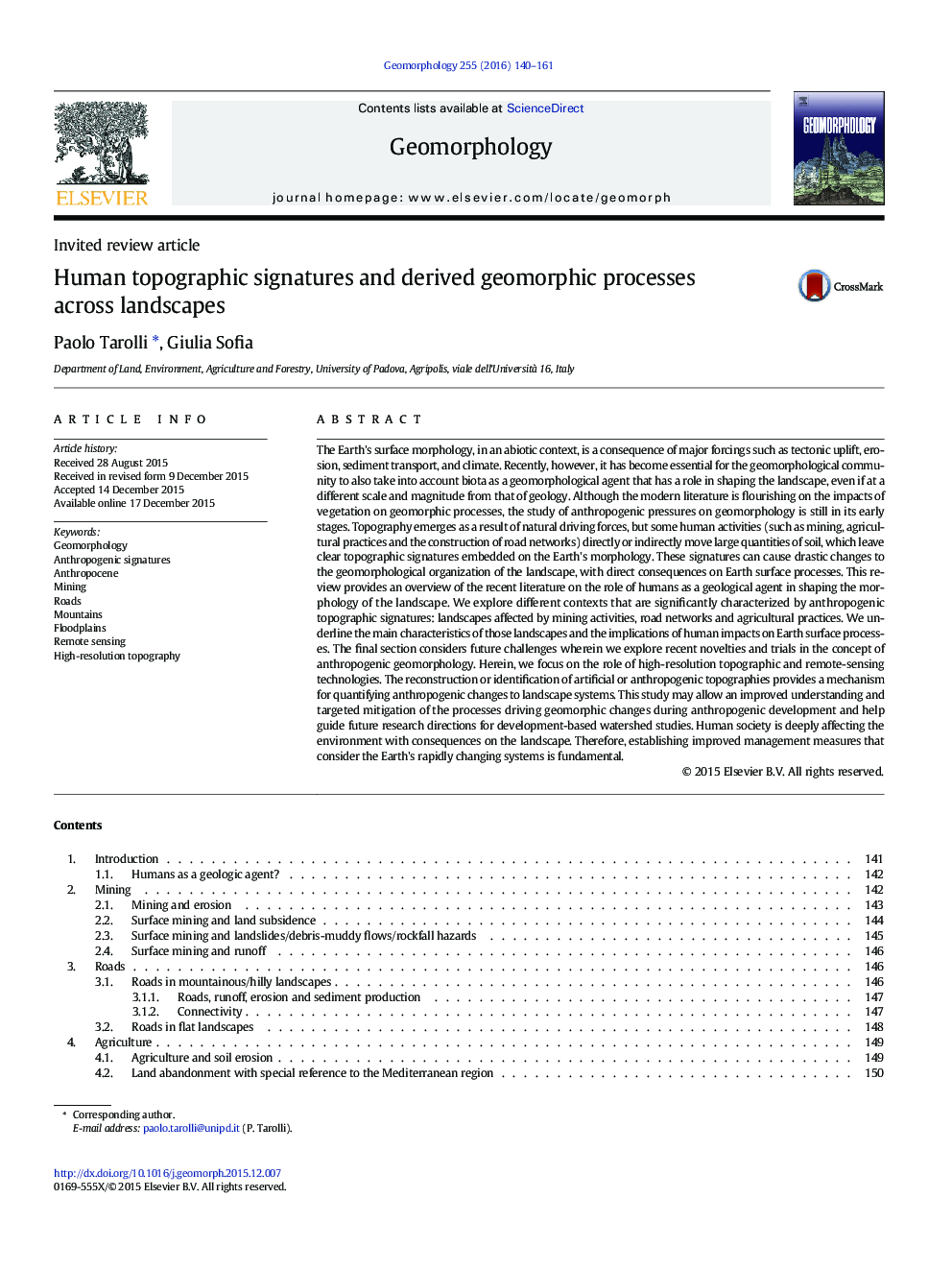| کد مقاله | کد نشریه | سال انتشار | مقاله انگلیسی | نسخه تمام متن |
|---|---|---|---|---|
| 4684115 | 1635394 | 2016 | 22 صفحه PDF | دانلود رایگان |
• Human topographic signatures and derived processes across landscapes
• Humans as a geological agent in shaping the landscapes
• Anthropogenic geomorphologies case studies: mines, road networks, agricultural practices
• High-resolution topography: an effective tool for the analysis of the anthropogenic signature
• New frontiers and future challenges
The Earth's surface morphology, in an abiotic context, is a consequence of major forcings such as tectonic uplift, erosion, sediment transport, and climate. Recently, however, it has become essential for the geomorphological community to also take into account biota as a geomorphological agent that has a role in shaping the landscape, even if at a different scale and magnitude from that of geology. Although the modern literature is flourishing on the impacts of vegetation on geomorphic processes, the study of anthropogenic pressures on geomorphology is still in its early stages. Topography emerges as a result of natural driving forces, but some human activities (such as mining, agricultural practices and the construction of road networks) directly or indirectly move large quantities of soil, which leave clear topographic signatures embedded on the Earth's morphology. These signatures can cause drastic changes to the geomorphological organization of the landscape, with direct consequences on Earth surface processes. This review provides an overview of the recent literature on the role of humans as a geological agent in shaping the morphology of the landscape. We explore different contexts that are significantly characterized by anthropogenic topographic signatures: landscapes affected by mining activities, road networks and agricultural practices. We underline the main characteristics of those landscapes and the implications of human impacts on Earth surface processes. The final section considers future challenges wherein we explore recent novelties and trials in the concept of anthropogenic geomorphology. Herein, we focus on the role of high-resolution topographic and remote-sensing technologies. The reconstruction or identification of artificial or anthropogenic topographies provides a mechanism for quantifying anthropogenic changes to landscape systems. This study may allow an improved understanding and targeted mitigation of the processes driving geomorphic changes during anthropogenic development and help guide future research directions for development-based watershed studies. Human society is deeply affecting the environment with consequences on the landscape. Therefore, establishing improved management measures that consider the Earth's rapidly changing systems is fundamental.
Journal: Geomorphology - Volume 255, 15 February 2016, Pages 140–161
